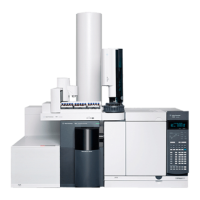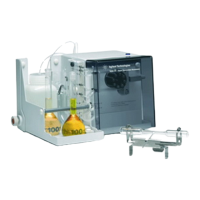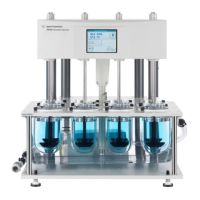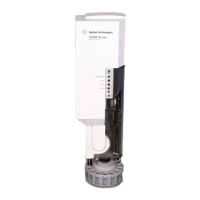Agilent 7100 Capillary Electrophoresis System User Manual 103
Using the Agilent 7100 Capillary Electrophoresis System 5
Capillary Electrophoresis, CE
Injection
You have several choices for CE injection:
• Hydrodynamic injection (by pressure or vacuum)
• Electrokinetic injection (applying a voltage, current or power)
• Using an injection program
The injection parameters can be programmed using an expandable table in the
right side of the CE Method Setup screen. The associated timetable can be used
to apply pressure, apply voltage or flush between vials. Inlet and outlet vials
can be loaded and wait time can be programmed here. After the injection has
finished, the analysis starts with recording detector signals to result file.
Hydrodynamic Injection
With hydrodynamic injection, the inlet buffer reservoir is replaced with the
sample vial. A pressure is applied for a certain time to introduce the sample in
the capillary. The system constantly controls the pressure and corrects for the
rise time effects of valves and the compressibility of air. When pressure is
applied, the pressure to the sample vial is increased gradually to its setpoint
after which the pressure decreases gradually to approximately a fifth. Then a
correction time is inserted after which the pressure decreases gradually to
atmospheric pressure. This results in accurate and reproducible injection, as
well as exceptional injection linearity.
Injection by pressure is the most frequently used injection technique. There
are no differences in injection concentration for molecules with different
mobilities as in electrokinetic injection.
With viscous buffer system the flush command can be used. However, injection
of sample to the capillary at this high pressure is not monitored by the self-
correcting injection algorithm. This sample application to the capillary is
therefore less reproducible. To compensate for this, internal standards might
be useful in quantitative analysis.
